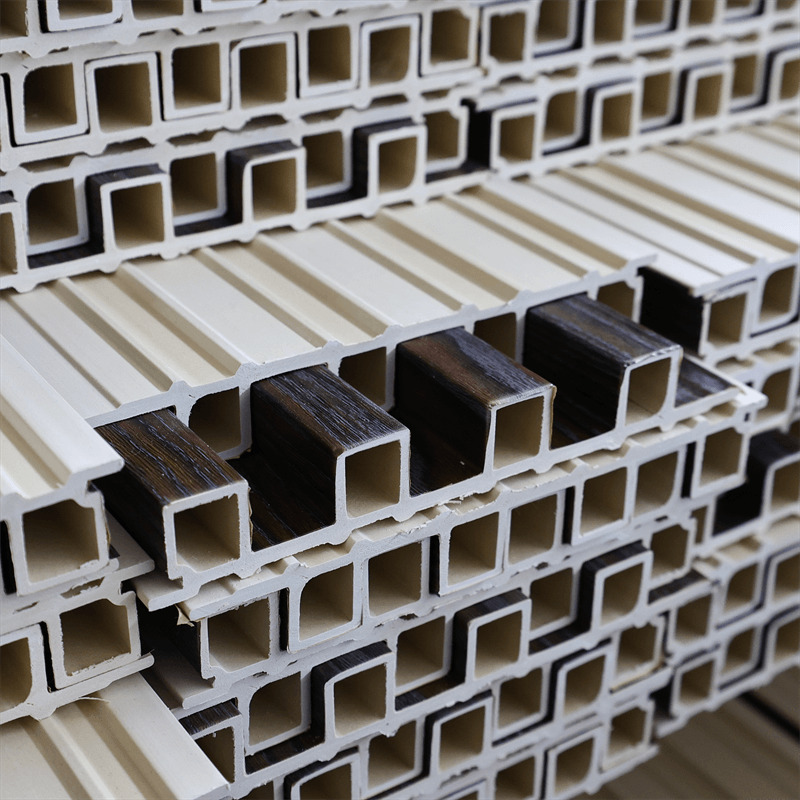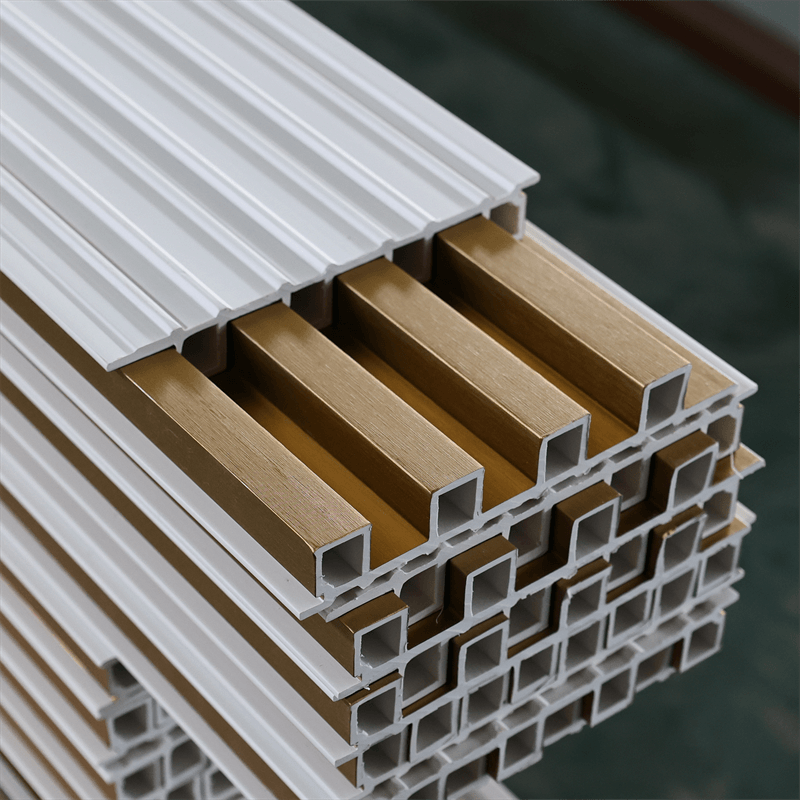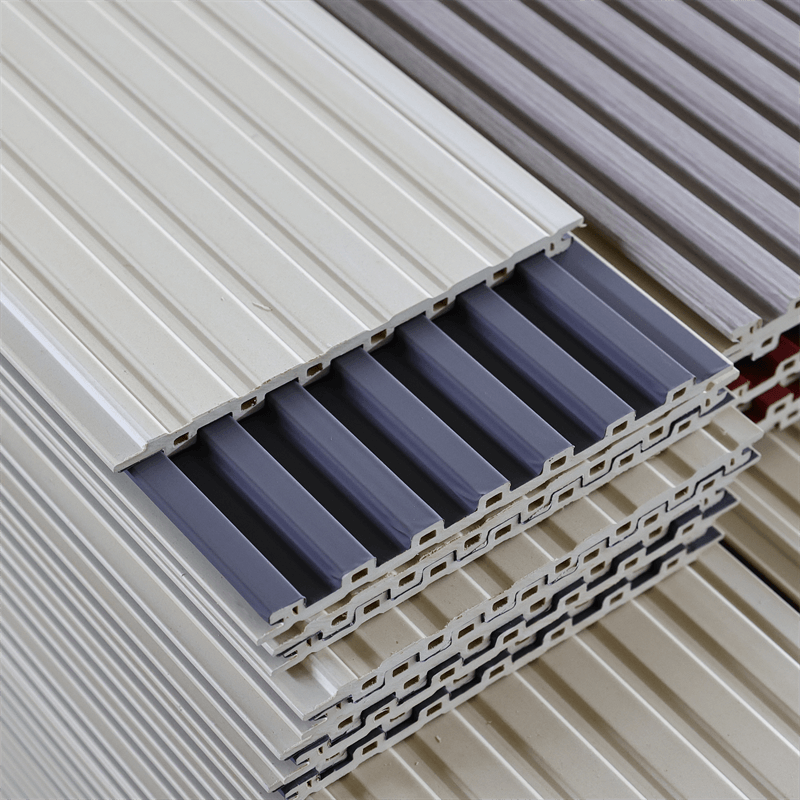Moisture-prone areas, such as bathrooms, kitchens, and basements, require special attention when it comes to choosing building materials.
The presence of moisture can lead to mold growth, warping, and deterioration of traditional wall materials.
In this essay, we will explore why WPC (Wood-Plastic Composite) wall panels are an ideal choice for moisture-prone areas.
We will discuss the unique properties of WPC panels, their resistance to moisture damage, their durability in wet environments, and practical considerations when using them in such areas.

I. Understanding the Unique Properties of WPC Wall Panels:
WPC wall panels are composed of a blend of wood fibers or flour and thermoplastic resins.
This combination creates a material that possesses several unique properties that make it well-suited for moisture-prone areas:
- Waterproof: WPC panels are inherently waterproof due to their composition. The thermoplastic resins act as a barrier, preventing water from penetrating the panel’s surface. This property ensures that the panels remain unaffected by moisture, even in humid or wet environments.
- Moisture Resistance: WPC panels have excellent moisture resistance, which means they do not absorb water like traditional wood materials. This resistance prevents the panels from swelling, warping, or rotting when exposed to moisture, making them highly durable in wet conditions.
- Mold and Mildew Resistance: The combination of wood fibers and thermoplastic resins in WPC panels creates a surface that is resistant to mold and mildew growth. This resistance helps maintain a healthy and hygienic environment in moisture-prone areas, where mold and mildew are common concerns.
II. The Benefits of WPC Wall Panels in Moisture-Prone Areas:
Choosing WPC wall panels for moisture-prone areas offers several notable benefits:
- Durability: WPC panels are designed to withstand the challenges posed by moisture. They do not absorb water, making them resistant to issues like swelling, warping, or rotting. This durability ensures that the panels maintain their structural integrity and aesthetic appeal even in damp environments.
- Easy Maintenance: WPC wall panels are easy to clean and maintain in moisture-prone areas. They can be wiped clean with a damp cloth or mild cleaning solution, ensuring that any moisture-related stains or residue are easily removed. This low-maintenance feature saves both time and effort in maintaining the appearance of the panels.
- Longevity: Due to their resistance to moisture damage, WPC wall panels have a longer lifespan compared to traditional wall materials. They do not deteriorate or degrade as quickly, providing a long-lasting solution for moisture-prone areas. This longevity translates to cost savings over time, as replacement and repair needs are minimized.
- Aesthetic Appeal: WPC wall panels are available in a wide range of designs, colors, and finishes, allowing for creative and customized interior design in moisture-prone areas. The panels can mimic the look of natural wood or have a contemporary, sleek appearance, enhancing the visual appeal of the space while providing moisture resistance.
III. Practical Considerations for Using WPC Wall Panels in Moisture-Prone Areas:
When using WPC wall panels in moisture-prone areas, there are several practical considerations to keep in mind:
- Proper Installation: It is essential to ensure proper installation of WPC panels in moisture-prone areas. The panels should be securely fastened and sealed to prevent any water infiltration behind the panels. This will maintain the integrity of the wall and prevent moisture-related issues.
- Ventilation: Adequate ventilation is crucial in moisture-prone areas to control humidity levels and prevent moisture buildup. Proper ventilation systems, such as exhaust fans or windows, should be installed to promote air circulation and reduce the risk of excessive moisture.
- Substrate Preparation: Before installing WPC panels, the underlying substrate should be properly prepared. It should be clean, dry, and level to ensure a stable base for the panels. Any existing moisture issues or leaks should be addressed before installation.
- Regular Inspections: While WPC panels are highly resistant to moisture damage, regular inspections are recommended to detect any signs of water intrusion or damage. Timely detection and repair of any issues will help maintain the longevity and performance of the panels in moisture-prone areas.
WPC wall panels provide an ideal solution for moisture-prone areas by offering a combination of durability, moisture resistance, mold and mildew resistance, easy maintenance, and aesthetic appeal.
Their unique properties make them a superior choice compared to traditional wall materials in environments where moisture is a concern.
By choosing WPC wall panels for moisture-prone areas such as bathrooms, kitchens, and basements, homeowners and designers can enjoy long-lasting, visually appealing, and low-maintenance wall surfaces.
With their ability to withstand moisture-related challenges, WPC panels offer peace of mind and provide a practical solution for creating beautiful and functional spaces in areas where moisture is a constant presence.
In conclusion, WPC wall panels offer an ideal solution for moisture-prone areas due to their unique properties and numerous benefits.
Their waterproof and moisture-resistant nature ensures that they remain unaffected by water, preventing issues such as swelling, warping, and rotting.
The resistance to mold and mildew growth helps maintain a hygienic environment.

Using WPC wall panels in moisture-prone areas provides several advantages, including durability, easy maintenance, longevity, and aesthetic appeal.
These panels are designed to withstand the challenges posed by moisture, offering a long-lasting and visually appealing solution.
Their easy maintenance requirements save time and effort, while their longevity results in cost savings over time.
When incorporating WPC wall panels in moisture-prone areas, it is essential to consider proper installation techniques, ensuring secure fastening and sealing to prevent water infiltration.
Adequate ventilation systems should be in place to control humidity levels and promote air circulation. Regular inspections will help detect any signs of water intrusion or damage, allowing for timely repairs.
By choosing WPC wall panels for moisture-prone areas, homeowners, designers, and builders can create spaces that are not only resistant to moisture-related issues but also visually appealing.
The versatility of WPC panels, with various designs, colors, and finishes, allows for customization to suit any interior style.
In summary, WPC wall panels are an excellent choice for moisture-prone areas, offering durability, moisture resistance, mold and mildew resistance, easy maintenance, and aesthetic appeal.
Incorporating these panels ensures long-lasting, visually appealing, and low-maintenance surfaces that can withstand the challenges posed by moisture.
With their numerous benefits, WPC wall panels provide an ideal solution for creating beautiful and functional spaces in areas where moisture is a constant presence.

